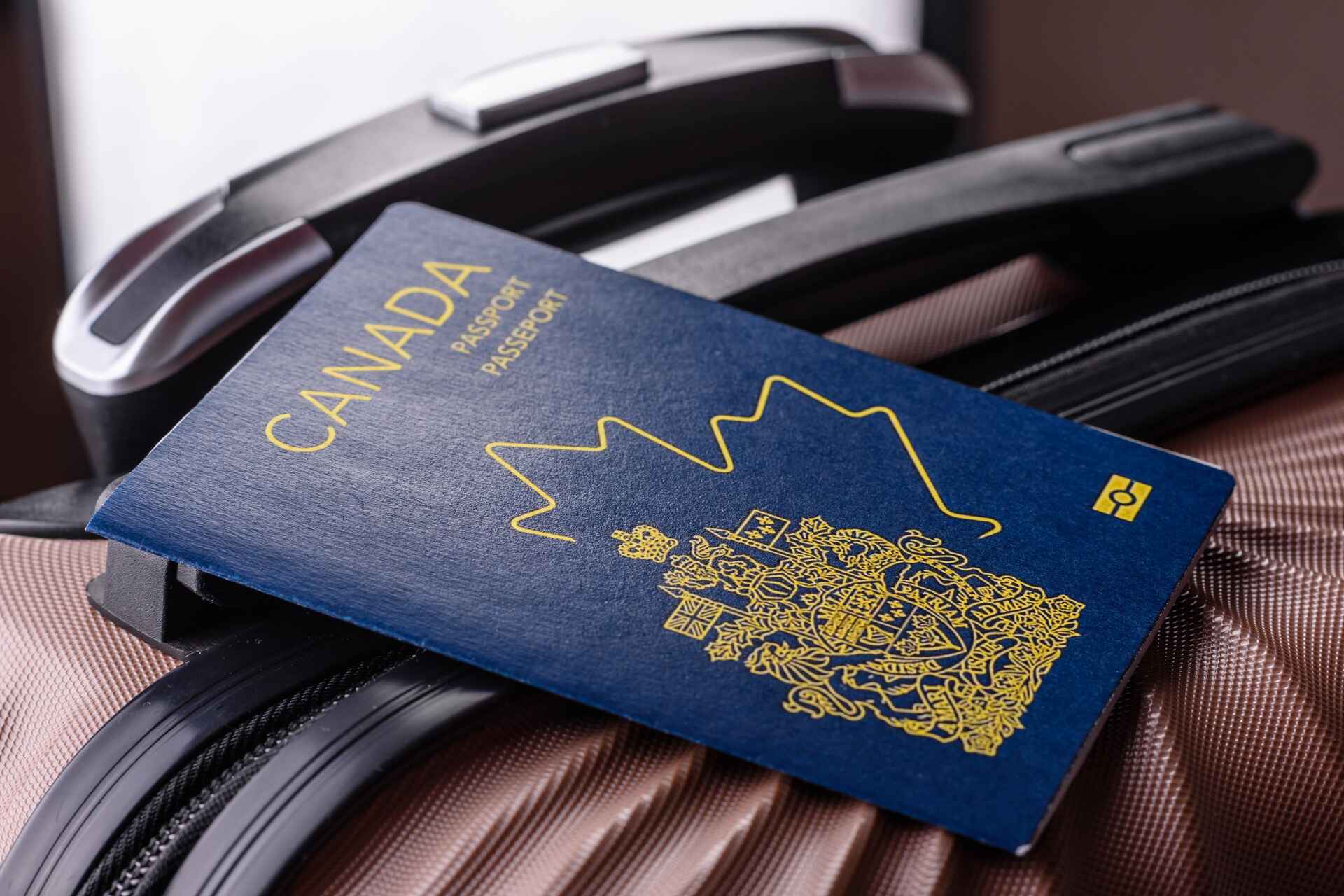
To appeal a Canada visitor visa refusal, you have several options depending on your specific situation. These include requesting a reconsideration from Immigration, Refugees and Citizenship Canada (IRCC), filing for judicial review at the Federal Court, or submitting a new application that addresses the previous refusal reasons.
Receiving a visitor visa refusal can be both frustrating and disappointing, especially when you’ve made travel plans to visit family, attend important events, or explore Canada. Without proper action, you may face continued refusals, wasted application fees, and lost opportunities for legitimate travel.
Our judicial review immigration lawyers understand the complexities of visa refusals and can help you navigate the appeal process with expertise and confidence.
In the strict legal sense, Temporary Resident Visas (TRVs) generally cannot be appealed through the Immigration Appeal Division. Unlike certain permanent residency decisions, visitor visa refusals don’t have a dedicated appeal pathway within the immigration system.
However, you can challenge the decision through a Judicial Review at the Federal Court if you believe there was a legal or procedural error in your application assessment. This isn’t technically an appeal but rather a review of whether the visa officer followed proper procedures and made a reasonable decision.
⚠️ Judicial Review applications must be filed within strict deadlines: 15 days for refusals issued inside Canada, or 60 days for refusals issued at visa offices outside Canada.
Federal Court Appeal Process Overview
| Step | Timeline | Legal representative |
|---|---|---|
| File Notice of Application | Within 15 or 60 days | Immigration lawyer (client not required to appear) |
| File Affidavit & Record | Within 30 days after | Immigration lawyer (client signs affidavit) |
| Hearing | ~3–6 months later | Immigration lawyer (client does not attend) |
📌 Only a Canadian immigration lawyer (not a Regulated Canadian Immigration Consultant) can represent clients at Federal Court. This distinction is important when seeking professional help for your case.
Additional reading: immigration appeals
When facing a visitor visa rejection, your first step should be to carefully review the refusal letter provided by IRCC. This document outlines the grounds for refusal, though often in general terms using standard paragraphs referring to sections of the Immigration and Refugee Protection Act.
Do not rush into reapplying without understanding exactly why your application was refused. Many applicants make the mistake of immediately submitting a new application with identical information, which typically results in the same outcome.
Instead, consider these immediate steps:
⚠️ Your new application may be refused unless it includes new or different information that satisfies the officer’s original concerns.
Want help reviewing your refusal and deciding your next steps? Book a consultation with our immigration lawyers today.
A typical visitor visa refusal letter is brief and references specific sections of Canadian immigration law. While the letter may not provide detailed reasons, it will indicate which sections of the Immigration and Refugee Protection Act or Regulations were the basis for the refusal.
Common Visa Refusal Reasons
| Refusal Code | Description | Officer Concern |
|---|---|---|
| R179(b) | Temporary Intent | May not leave Canada after stay |
| R11(1) | Eligibility | Missing documents or forms |
| A40(1)(a) | Misrepresentation | Inaccurate or false information |
| A16(1) | Documentation | Insufficient or incomplete documents |
| R183 | Financial Requirements | Inadequate funds to support visit |
| A22(2) | Travel History | Poor compliance with previous visas |
The letter will typically include statements like:
“I am not satisfied that you will leave Canada at the end of your stay as a temporary resident, as stipulated in paragraph R179(b) of the Immigration and Refugee Protection Regulations, based on the purpose of your visit.”
“I am not satisfied that you have provided sufficient evidence of financial support for the duration of your intended stay in Canada, as required by paragraph R183 of the Immigration and Refugee Protection Regulations.”
💡 The brief letter won’t tell the whole story. The officer’s detailed reasoning is contained in GCMS notes, which provide critical insights into exactly what influenced their decision.
Additional reading: immigration lawyer in Etobicoke, Ontario

To fully understand why your visitor visa was rejected, you’ll need to request your Global Case Management System (GCMS) notes. These internal notes contain the visa officer’s detailed assessment of your application and specific reasons for refusal, providing much more insight than the standard refusal letter.
You can obtain these notes by submitting an Access to Information and Privacy (ATIP) request to IRCC. These requests typically take about 30 days to process, though delays can occur during busy periods. The notes will show you exactly what the officer was concerned about in your application.
To request your GCMS notes, visit the official ATIP portal at https://atip-aiprp.apps.gc.ca/ and complete the online form specifying that you want GCMS notes for your visitor visa application.
⚖️ GCMS notes give you the most complete view of your file—don’t reapply without reviewing them, as they reveal the exact concerns you need to address in any future application.
Additional reading: How to overcome inadmissibility due to misrepresentation in Canada
A reconsideration request is a formal letter asking IRCC to review your previously refused application in light of new information or evidence of an error in the decision-making process. This request is submitted through the IRCC Web Form and specifically asks the visa office to reconsider their decision rather than assessing a new application.
It’s important to understand that IRCC is not legally obligated to reconsider a refusal unless there’s a clear error in fact or law. The legal principle of functus officio generally means that once an officer has made a decision, their authority over the matter ends. However, officers do have discretion to reconsider in exceptional circumstances.
Reconsideration requests are most effective when:
💡 When preparing a reconsideration request, focus on addressing specific issues mentioned in your GCMS notes rather than making general arguments about your eligibility.
Case Example: A tourist from the UK was denied a TRV due to insufficient funds. There was a miscalculation in the GCMS notes and a detailed reconsideration request was submitted with corrected bank documents. IRCC reversed the refusal within weeks.
Additional reading: permanent residence lawyer in Vaughan
Reapplying after a visitor visa refusal can be more effective than seeking reconsideration or judicial review in many situations. This approach allows you to submit an entirely new application that directly addresses the concerns that led to your previous refusal.
Reapplication makes the most sense when:
When reapplying, it’s vital to thoroughly revise your application package to address all concerns from the previous refusal. This might include providing stronger financial documentation, clearer proof of ties to your home country, or more detailed travel plans.
💡 Applying with the same information as your refused application will almost certainly result in another refusal. Each new application must demonstrate meaningful improvements.
Case Example: A client initially applied alone and was refused due to weak travel ties. Through legal support, they prepared a stronger reapplication with employer support letters, property documents, and a clear travel itinerary—and they were approved within three weeks of submission.

Beyond the standard approaches of reconsideration, judicial review, and reapplication, there are additional strategies that may help in certain situations:
💡 Sometimes a different immigration route may better reflect your goals—and increase your chances of success, particularly if you have skills or education that Canada needs.
The visitor visa refusal process demands more than accurate paperwork alone. Our immigration lawyers bring specialized knowledge of Canadian immigration law, experience with Federal Court litigation, and strategic insights that can make the difference between success and continued frustration.
An experienced immigration lawyer provides:
Unlike general immigration consultants who cannot represent clients at Federal Court, our immigration lawyers can handle all aspects of your case, from administrative reapplications to complex legal challenges.

Yes, you can pursue both options simultaneously, though it’s generally more strategic to choose one path based on your specific circumstances. Reconsideration requests work best when there’s a clear error, while reapplications allow you to address all concerns comprehensively with new evidence.
GCMS notes typically take about 30 days to receive after submitting an ATIP request. During busy periods or if your file is complex, it may take longer. Expedited requests are possible in urgent situations, though not guaranteed to be processed faster.
Previous visa refusals can impact future applications if the same concerns remain unaddressed. Immigration officers have access to your application history and will check if issues from previous refusals have been resolved. However, a well-prepared subsequent application that directly addresses previous concerns can overcome this hurdle.
Success rates vary significantly based on individual circumstances and how effectively the refusal reasons are addressed. Many applicants successfully obtain visas after refusals when they properly address the specific concerns identified in their GCMS notes and submit stronger evidence. Professional guidance can substantially improve these chances.
In Canadian immigration terminology, a “refusal” means your application was assessed by an officer who determined you didn’t meet requirements. A “rejection” typically refers to applications returned as incomplete before substantive assessment. Refusals require addressing substantive concerns, while rejections often just require correcting technical issues.